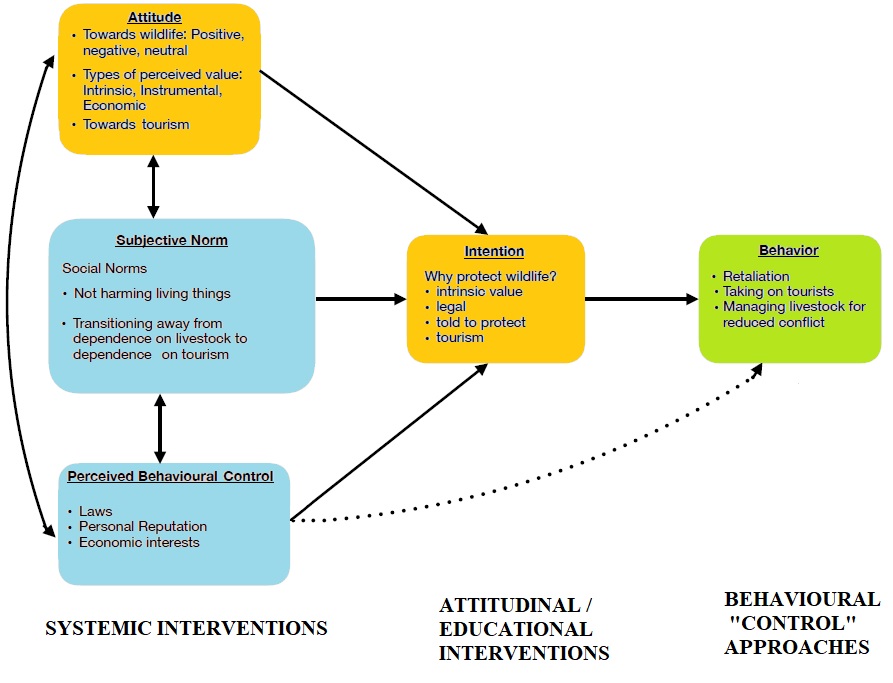I have provided input to a number of conservation programmes which are dealing with the pressures of human-wildlife conflict, particularly where large predators pose a threat to livestock and people.
Some of these animals are a mortal threat, such as tigers in the Sundarbans. In other locations such as the Himalayas or East Africa, local villagers, regard leopards, hyenas or wolves as pests, because of their tendency to prey on livestock. As a result, villagers or livestock herders in these locations may resort to retaliatory killings of these animals.
An innovative Himalayan Homestays ecotourism programme in the Ladakh region of Northwest India, suggests that educating communities on the ecological importance of snow leopards to instill greater value for this keystone species. The scheme is based around provision to locals of an opportunity to earn an additional source of income by hosting nature tourists. Locals were trained in housekeeping while youth acquired skills as guides to lead nature tours.
“People who used to kill snow leopards in revenge, before our intervention, are today trying to attract the cat to their villages,” says Tsewang Namgail, scientist and director of the Snow Leopard Conservancy-India Trust and co-author of the study. “This was unthinkable 20 years ago when people wanted the snow leopard as away from them as possible.”
We are now understanding better that people’s attitudes and, perhaps even more importantly, their behaviour towards snow leopards is driven by a complex of factors. importantly, some behaviour controls, like economic interests, may over-ride intentions. These controls will be amplified or reduced in effect by the social norms of the community. If people have positive social norms it will assist, but not eliminate confounding effects. At the same time, education also will not be able to permanently shift behaviour, other factors must also align.

“Himalayan Homestays, and ecotourism, in general, should provide economic value, but also ideally foster value, beyond economic, for the species itself, if that positive relationship is to persist through fluctuations in the tourism industry,” explained Kate Vannelli, lead author of the study, which was her Master’s dissertation at the University of Kent.
Whilst incentives may appear to be the drivers of people’s changes in attitudes, it is not quite so simple. This has implications for leaders. We need to design social and behavioural interventions so that they deliver the desired behavioural outcome (not just percieved attitudinal changes). Second we actually need to be better at designing interventions which reshape human behaviour in natural landscapes, such as making livestock less attractive to predators in the first place. In the latter case there is new interesting work using foxlights in the Himalayas to deter predators from entering villages. Nevertheless other initiatives to ensure suitably abundant natural prey also needs consideration.
Reading:
Jain, N. (2019) In Ladakh, community-based ecotourism is helping promote positive perceptions of the snow leopard. Firstpost, 27 march 2019. https://www.firstpost.com/india/in-ladakh-community-based-ecotourism-is-helping-promote-positive-perceptions-of-the-snow-leopard-6253391.html
Vannelli, K. Hampton, M.P. Namgail, T. & Black, S. A. (2019). Community participation in ecotourism and its effect on local perceptions of snow leopard (Panthera uncia) conservation, Human Dimensions of Wildlife, DOI: 10.1080/10871209.2019.1563929